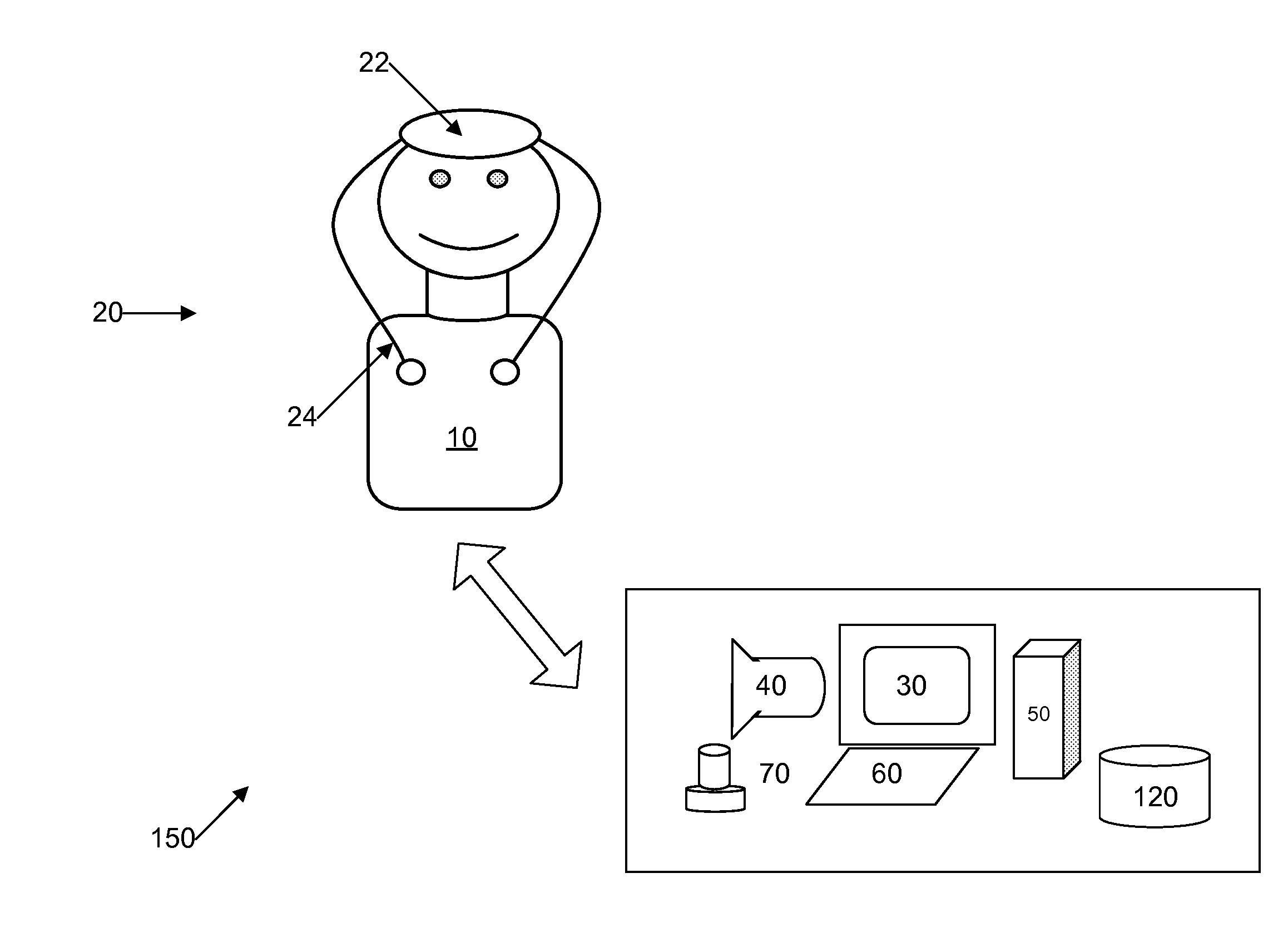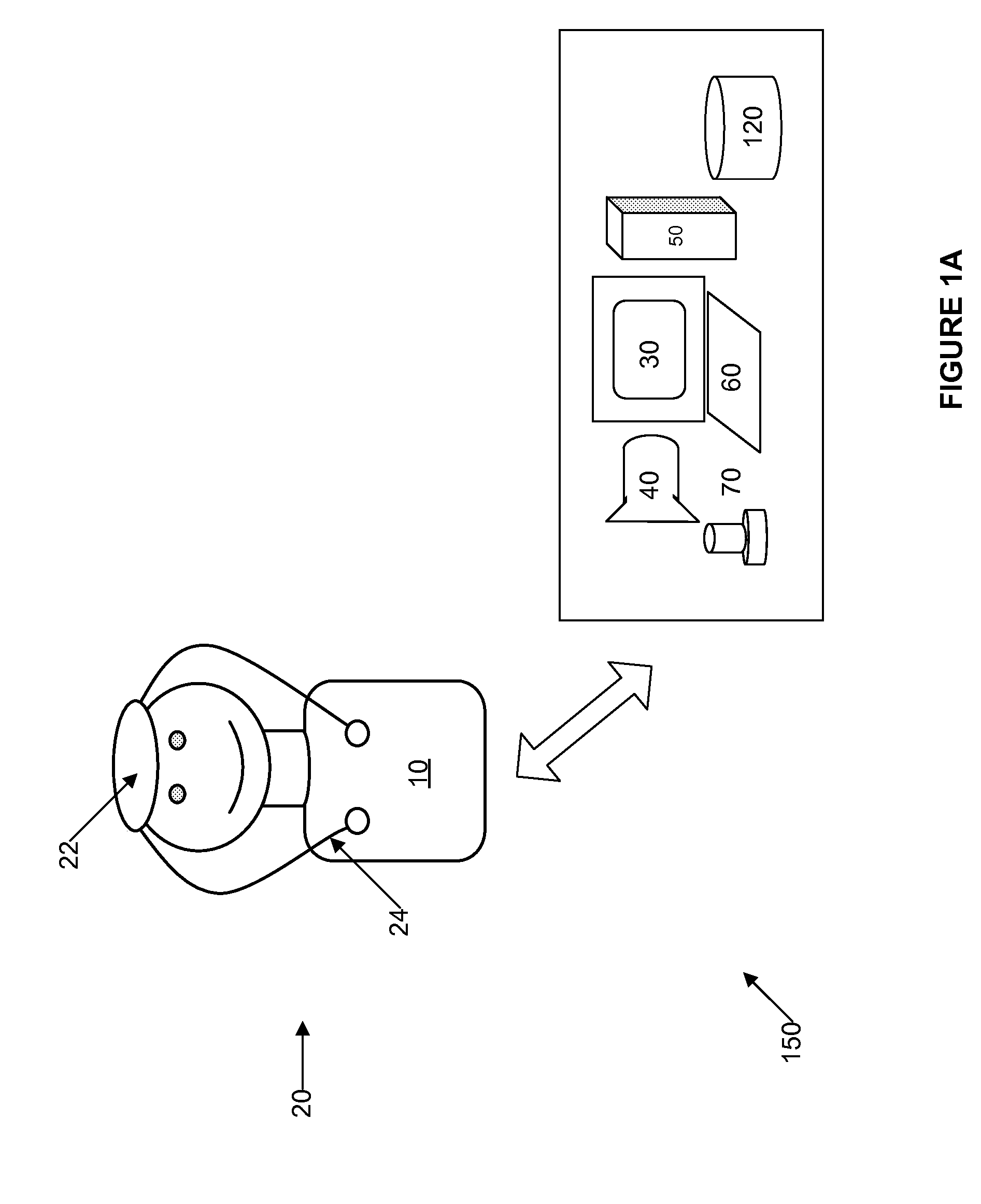Interactive psychophysiological profiler method and system
- Summary
- Abstract
- Description
- Claims
- Application Information
AI Technical Summary
Benefits of technology
Problems solved by technology
Method used
Image
Examples
experiment 1
usceptibility to Sleep Deprivation
[0100]Introduction:
[0101]An a-priori identification of individuals prone to mental errors or susceptible to fatigue as a result of sleep deprivation could improve safety and productivity.
[0102]Research Protocols:
[0103]Twenty-four healthy subjects (males=18, females=6; mean age=24.9; range 21-38) completed a baseline Alertness and Memory Profile (AMP) session (beginning ˜0900 on Friday) and nine AMP session beginning ˜1900 Friday and concluding ˜0500 on Sunday. A 1-hour break was provided between each AMP s between each session; a 40-minute nap was provided at 1900 on Saturday. Technician-observed drowsiness (available for 18 / 24 subjects), reaction times (“RT”), and percent correct responses were computed across subjects for each AMP battery. Within-subject correlations across batteries were computed.
[0104]Results:
[0105]Repeated measures ANOVA across the 10 time-points revealed progressively increasing drowsiness in all indices (B-Alert classificatio...
experiment 2
logical Profiles of Sleep Deprivation and Stress
[0112]Introduction:
[0113]Beyond sleep deprivation, individuals (e.g., combat soldiers, factory workers, etc.) may be exposed to other factors which can contribute to dangerous consequences, including but not limited to stress and fatigue. This study evaluated the change in neurocognitive measures as compared to psychophysiological markers of stress and fatigue.
[0114]Methods:
[0115]USMC battalion / platoon leaders (n=17) were evaluated during 28-day, live-fire training exercises with continuous actigraphy and a baseline and weekly AMP session using an abbreviated montage of EEG and EKG acquired during a 3-Choice-Vigilance-Test (3C-VT). Self-reported stress, fatigue and mood were assessed with Profile of Mood States, Stanford / Karolinska sleepiness scales, Brief Fatigue Inventory and Perceived Stress Scale.
[0116]Results:
[0117]The baseline AMP session was used to accommodate individual differences in the EEG in order to accurately generate pa...
experiment 3
cognitive Measures Associated with Disease States
[0124]Introduction:
[0125]Obstructive Sleep Apnea (“OSA”) is the most common disorder observed in the practice of sleep medicine and is responsible for more mortality and morbidity than any other sleep disorder. OSA is characterized by recurrent failures to breathe adequately during sleep (termed apneas or hypopneas), usually due to collapse of the upper airway. These events can cause repetitive hypoxemic episodes and sleep fragmentation. OSA causes daytime drowsiness and cognitive deficits and increases risk for hypertension, congestive heart failure, coronary artery disease, myocardial infarction, cardiac arrhythmias, stroke, diabetes and depression. The severity of OSA defined by the Respiratory Disturbance Index (“RDI”, the average number of abnormal breathing events / hour of sleep) can be evaluated with overnight polysomnography (“PSG”) in a sleep laboratory, or with in-home techniques, however, the assessment and quantification ED...
PUM
 Login to View More
Login to View More Abstract
Description
Claims
Application Information
 Login to View More
Login to View More - R&D
- Intellectual Property
- Life Sciences
- Materials
- Tech Scout
- Unparalleled Data Quality
- Higher Quality Content
- 60% Fewer Hallucinations
Browse by: Latest US Patents, China's latest patents, Technical Efficacy Thesaurus, Application Domain, Technology Topic, Popular Technical Reports.
© 2025 PatSnap. All rights reserved.Legal|Privacy policy|Modern Slavery Act Transparency Statement|Sitemap|About US| Contact US: help@patsnap.com



